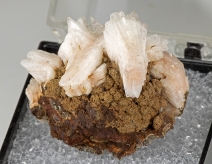
How different the two men’s mental Americas were-TR’s vigorous, bloody, bully place, and Faulkner’s Yoknapatawpha County, where the gene pool runs to swamp, and prose reeks of lassitude and degeneration. Paul Gray describes the remarkable trajectory of William Faulkner’s reputation from 1944, when his books were virtually out of print, to 1950, when he received the Nobel Prize.įaulkner’s famous fictional bear, like Teddy Roosevelt’s wretched real one, was a Mississippian. This issue of Smithsonian raises questions about another American’s prowess and myth. He defended the use of so much ammunition plenty was available, why not use it? Collecting specimens for museums provided moral cover for the carnage-the interests of science and education. TR had the good grace to be self-conscious about all this. But in Africa in 1909, he shot his first white rhino when the animal was asleep. In Mississippi in 1902, TR refused to shoot the proto-teddy bear. Shockingly, he killed nine rare white rhinoceroses, including four cows and a calf. He shot animals for "the strong eager pleasure of it." He relished toasting slices of elephant heart on a pronged stick over a fire. The godfather of the teddy bear was given to fierce inconsistencies as hunter and conservationist. As Bartle Bull records, the expedition collected and shipped home to the Smithsonian 4,900 mammals, 4,000 birds, 500 fish and 2,000 reptiles. Roosevelt summarized the setting melodramatically: "On the land and in the water there are dread brutes that feed on the flesh of man." During the safari, Roosevelt and his son Kermit killed 512 animals of more than 80 species, including 17 lions, 11 elephants, 20 rhinoceroses and ten buffalo. The native bearers referred to Roosevelt as Bwana Tumbo-"Bwana Stomach." He preferred his other camp name- Bwana Makuba, or "Great Master." The safari caravan on the march stretched out for over a mile.
#Bwana makuba professional
He hired the best of Africa’s white hunters three professional field naturalists, two of them taxidermists and as many as 500 native bearers to carry the gear, which included 60 works of Milton, Dickens and more than 30 other authors, bound in pigskin.

Financed by Andrew Carnegie and by his own proposed writings, Roosevelt hunted for specimens for the Smithsonian Institution and for the American Museum of Natural History in New York. When he left the White House in 1909, Roosevelt embarked upon the most opulent of all African safaris (admirably described in Bartle Bull’s chronicle Safari). Why wait for one clean, sure shot when you might blaze away with 10 or 15 bullets-laming the beast with a shot to the knee or haunch, then bracketing in on ear or shoulder? Roosevelt relied on what he called the "Ciceronian theory, that he who throws the javelin all day must hit the mark some time." His exuberance and boyish projection of triumph led to an addiction to taking aim from afar and wasting ammunition. After a boxing accident in the White House in 1904, he lost the sight of his left eye.

Roosevelt was also, from time to time, an almost hilariously appalling hunter-myopic, inaccurate, relentless, an unholy partnership of Mr. He was a poet-naturalist-and, of course, a supreme self-dramatist. Roosevelt, a conservationist who did more than any other President to preserve the American wild, rejoiced in vivid specificities of landscape and weather and animal life. His hunting books ( Outdoor Pastimes of an American Hunter, Hunting Trips of a Ranchman and, above all, African Game Trails, the record of his 1909 East African safari) rank with the best of American nature writing. Roosevelt himself was bracingly-ruthlessly-unsentimental in the woods. But in a nation that had wiped out passenger pigeons once capable of darkening the American sky and had blasted the buffalo off the plains, a cartoonist might sentimentalize if a hunter declined, on a technicality, to finish off a bear waiting under his rifle’s muzzle.Īudubon slaughtered astonishing numbers of birds in the course of his artistic expeditions. None but the basest hunter, of course, would shoot a tethered, semiconscious bear. Wendy Mitman Clarke’s article on teddy bears describes Teddy Roosevelt’s pursuit of a bear in Mississippi in 1902, and the subsequent newspaper cartoon of Roosevelt, in a faux-heroic pose, forbearing, in the end, to shoot the stunned, exhausted beast. For this department a distinguished writer is asked to read the magazine’s feature articles before publication and to comment or elaborate on them or take issue with them.


 0 kommentar(er)
0 kommentar(er)
